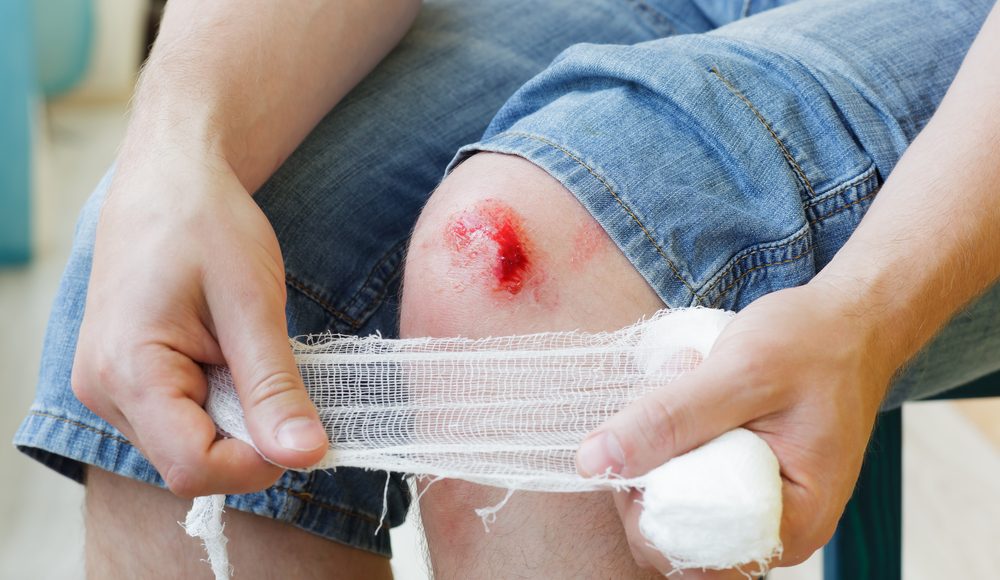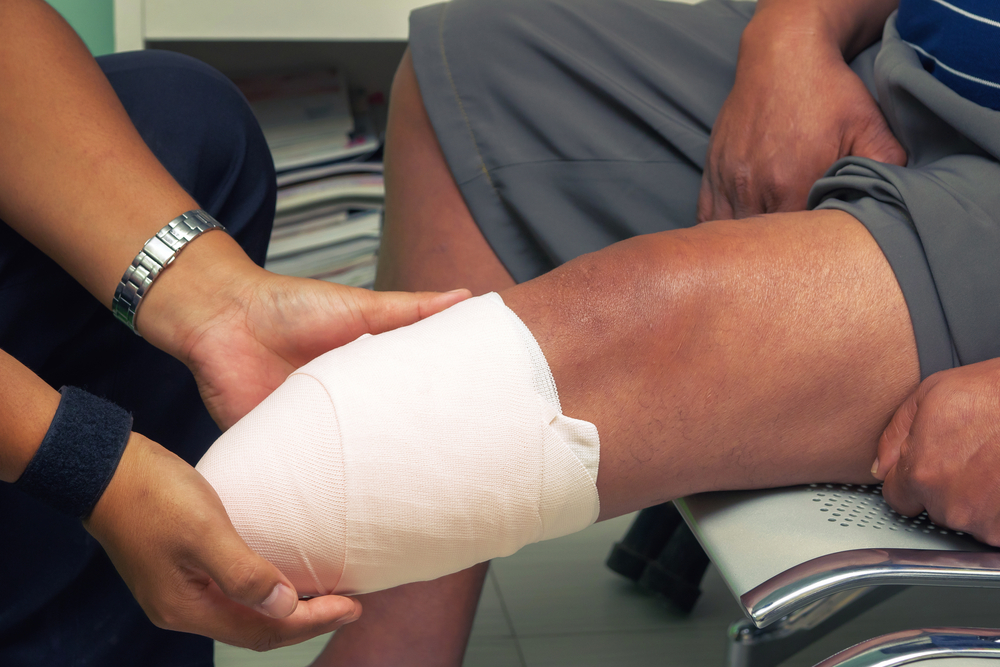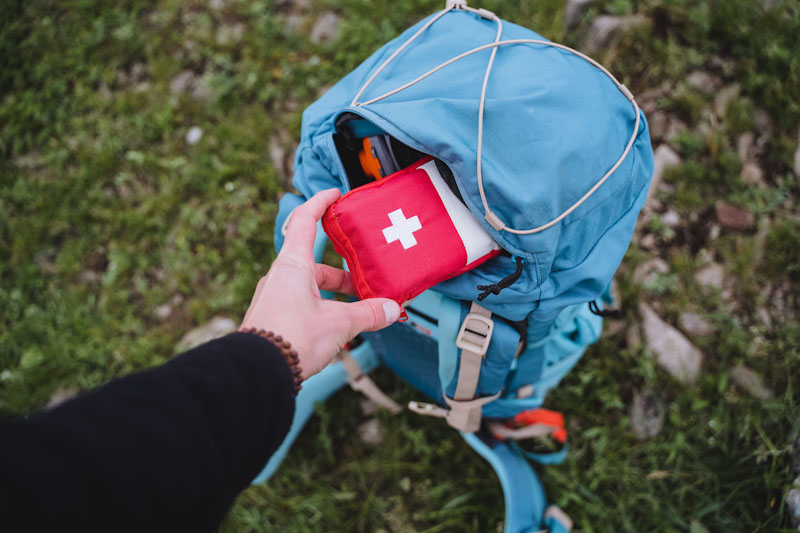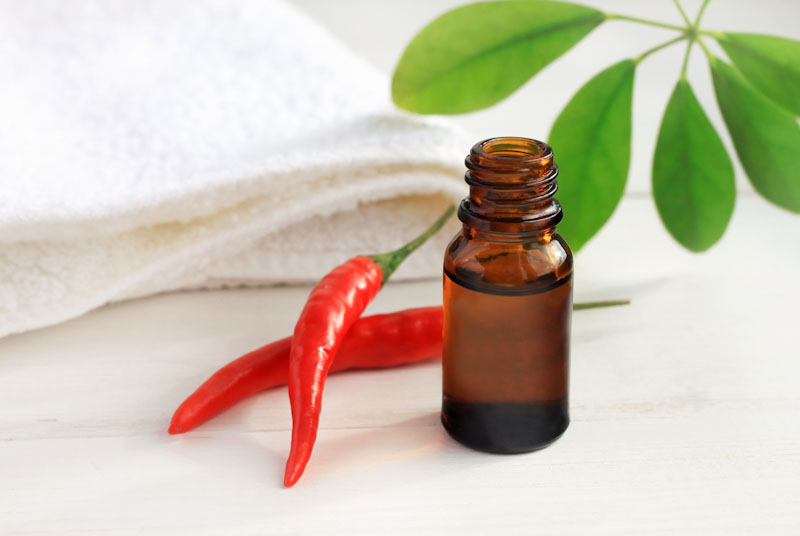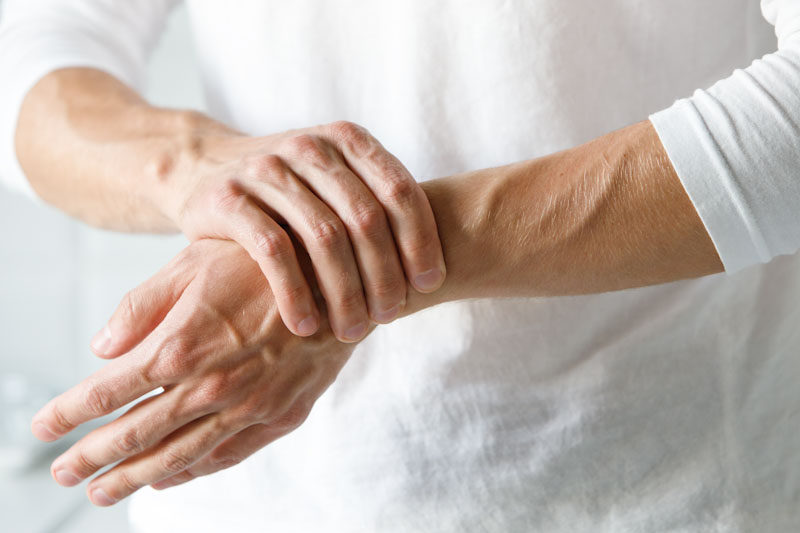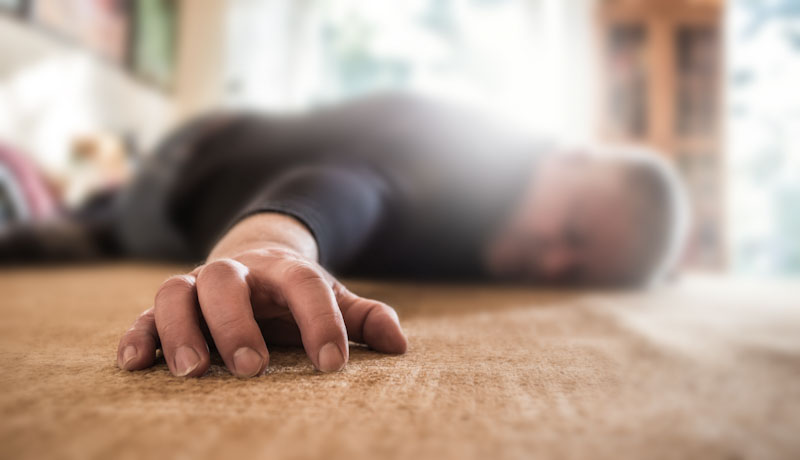For most people, getting injured means a trip to the emergency room. Anything from a deep cut to a broken limb to a stab wound can all present a challenge for your day-to-day life, but they’re all generally survivable.
However, even something as simple as a broken arm could potentially be fatal in a survival situation. How can you manage a wound without medical attention?
Most Common Kinds of Wounds
The term wound can describe dozens of different types of injuries. For the sake of expediency, we’re only going to talk about some of the most common ones you might encounter during a survival situation.
Abrasions: If you skinned your knee as a kid, then you’re familiar with the concept of an abrasion. These wounds are usually caused by rubbing your skin against rough surfaces at high speed — such as what happens when you hit the pavement after falling off a bike or skateboard. They will likely bleed, but the damage is usually superficial. The biggest challenge with abrasions is that dirt, gravel, and other detritus can be forced into the wound, which you’ll need to remove before bandaging.
Lacerations: If you slip with a knife or end up on the wrong end of someone else’s sword, then you’ll likely experience a laceration. The term applies to any cut, slice, or tear in the skin caused by a sharp object. These will almost always bleed, though the severity will depend on the cut’s location. For example, a laceration on the scalp will bleed profusely despite being relatively shallow. One that severs an artery in the arm or thigh could potentially be fatal in a few minutes.
Punctures: Puncture wounds happen when sharp objects penetrate deep into the skin and tissue beneath. These wounds may not bleed much on the surface, but depending on the depth of the injury, they can cause internal damage. Punctures are challenging to clean, and those caused by rusty metal can also increase the risk of developing tetanus. Animal bites have an increased risk of rabies.
Burns: Burns are fairly self-explanatory. Coming into contact with hot surfaces or liquid essentially cooks the skin as well as the tissue underneath. In addition to being incredibly painful, burns can be dangerous. The exposed skin is prone to infection during the healing process, and having burns on too much of your body can be fatal because of the extensive damage.
Broken Bones: A broken bone requires a trip to the emergency room for X-rays and a temporary cast followed by a visit to an orthopedic surgeon for a more permanent solution. In a survival situation, you won’t have access to any of that. A break could leave you unable to care for yourself or cause immense amounts of pain if it heals wrong.
Concussions: Even with medical care available, head injuries can be dangerous. Concussions occur when you hit your head or are struck by something. The brain is smashed against the inside of the skull, which can cause everything from minor headaches to severe hematomas or potentially fatal blood clots.
Avulsions/Uncontrolled Bleeding: Uncontrolled bleeding, also known as avulsions, can become fatal quickly if not controlled. This often occurs when large portions of the skin are torn away, or body parts are amputated.
Amputations: Amputations can happen, and they can be fatal if you don’t respond quickly. Severed arteries can result in hemorrhaging that can cause death in as little as five minutes.
3 Stages of Wound Healing
Managing wounds without medical attention is possible, but in addition to having the supplies, you need to understand the three stages of wound healing and know how to move effectively through each one.
- The healing process starts with inflammation. Your body realizes something is wrong, so it tries to achieve homeostasis. Your blood vessels will slowly constrict, sealing off the wounded area as platelets form to create scabs. Once the body detects the bleeding has stopped, it can begin the healing process. You’ll experience swelling, pain, and heat, which are signs you’re in the inflammation stage.
- Stage two of the healing process is known as proliferation. The body starts to heal the wound by creating new granulation tissue, red or pink. That means the injury is healing well, and the tissue is healthy. White tissue could indicate a lack of blood flow or nutrition to the wound, and darker-colored tissues often indicate infection.
- The final stage is known as the maturation stage and is when the new tissues will start to get stronger. Scar tissue might form during this stage, but it’s essential to keep up with your treatment plan because it isn’t fully healed yet.
Building the Ultimate First-Aid Kit
The most important thing in managing a wound without medical care has a comprehensive first-aid kit on hand. The Red Cross kit you can find at your local Walmart might have plenty of bandages and alcohol swabs, but that isn’t going to cut it when it comes to a survival situation. However, they can be a great starting point and provide a foundation for the kind of supplies you’ll need if you’re dealing with a wound without medical attention.
Start with the basics, including antiseptics for wound cleaning, Band-Aids for minor cuts, and bandages for more extensive wounds. Pack tweezers and an infrared thermometer for checking fevers. A stethoscope can be a valuable tool, but you need to learn how to use it.
You will likely also want to include more in-depth supplies, such as a set of scalpels and replacement blades or a suture kit. Practice suturing a practice dummy before you start trying it on yourself. In an emergency, having the ability to close a wound could mean the difference between life and death.
Dealing With a Wound on Your Own
How do you deal with these injuries without access to medical attention? Here are the kinds of wounds you might encounter and how to manage them.
- Abrasions are usually relatively simple to tend. Clean them out — including scrubbing the abraded area if there is dirt or gravel in the wound. Then, treat it with an antibacterial ointment and keep it covered until it heals. Monitor the site for infection.
- Lacerations are slightly more complex. Start by putting pressure on the wound to stop the bleeding so you can clean the site and assess the damage. Use antiseptic or saline irrigation to clean deeper wounds. Bandages are ideal for minor lacerations, while butterfly closures or sutures are best for larger ones. Then, treat the injury with antibacterial ointments and keep it bandaged. Remove the sutures or butterfly closures as it heals, and monitor for infection.
- Puncture wounds require careful cleaning and monitoring, simply because they can drive lots of bacteria and other debris deep into the flesh. Irrigate the injury with sterile saline or another disinfectant. Puncture wounds likely won’t require bandaging, but it is important to monitor them for infection.
- Burn treatment will depend on the severity and the percentage of the body affected. Use cool compresses immediately after the burn to pull some of the heat out of the wound. Apply ointment to the surface and cover lightly with sterile gauze. Be careful with your burns, and monitor the site for infection. Don’t pop any blisters.
- Broken bones can be challenging to set, especially if you’re trying to do them yourself. Be careful to make them as straight as possible, and once done, immobilize them. Broken bones can take six to 12 weeks to heal, and the only way they’re going to heal correctly is if you don’t move them. Splints and braces will be more accessible than plaster casts.
- Concussions are incredibly dangerous if you’re alone, but the only way to treat them is with time. Make sure you eat enough protein, stay hydrated, and don’t move your head and neck more than necessary. While staying awake isn’t required, you need to make sure you set the alarm to wake up every few hours.
- Avulsions or uncontrolled bleeding is incredibly dangerous in a survival situation. Your priority should be to stop the bleeding by whatever means necessary. Then, you can assess the damage and begin treating the wounds.
- Amputations follow the same rule: Stop the bleeding first. If you have access to medical assistance, you can take your severed limb to the hospital and reattach it. Without access to medical professionals, the best you can do is stop the bleeding and attend to wounds as they heal.
What to Consider After You’ve Healed
After you’ve healed, what will it take to get you back to fighting strength? One problem with managing your wounds without medical assistance is the development of scar tissue, which is inflexible and can limit mobility. Staying active throughout the healing process can help maintain your flexibility, though it won’t prevent the creation of scar tissue.
Once you’re healed, swimming or stretching in water can help you make the most of your exercise. Water adds extra resistance while providing cushion and reducing impact. Make sure you’re not entering unchlorinated water with open wounds, though. Natural water sources might look clean and clear, but they can harbor bacteria that could lead to severe infections.
First-aid skills are an essential part of every survivalist’s toolbelt. If the world falls apart or you find yourself stranded in the wilderness, being able to manage these wounds can mean the difference between life and death. Stay safe out there.


